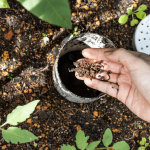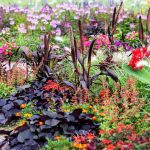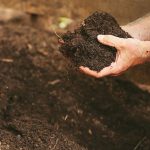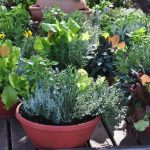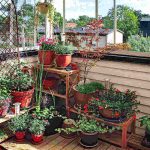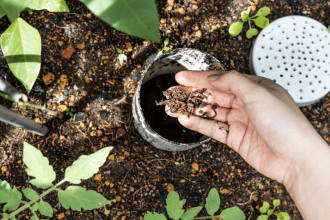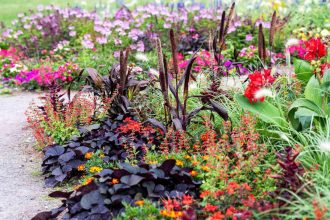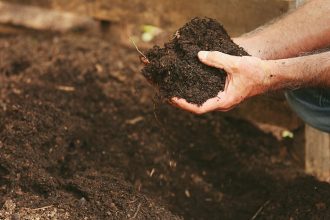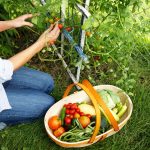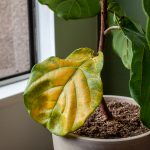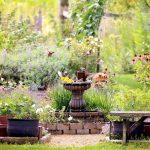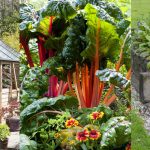When it comes to growing a thriving vegetable garden, the foundation of success lies in the soil beneath your feet. From sandy soils to loamy soils, each type brings its own unique set of characteristics and challenges to the gardening table. Understanding vegetable garden soil types is key to unlocking the full potential of your green space. So grab your gardening gloves and get ready to dig deeper into the world of soil science.

Introduction to Vegetable Garden Soil Types
When it comes to planting a successful vegetable garden, understanding the different types of soil is essential. The type of soil you have in your garden can greatly affect the growth and yield of your vegetables. By learning about the different soil types and how to optimize them for your garden, you can ensure that your plants thrive and produce a bountiful harvest.
There are several common types of soil that you may encounter in your vegetable garden:
- Clay Soil: This type of soil is dense and heavy, holding onto water and nutrients. It can be difficult to work with, but with proper amendments, it can provide a good foundation for your vegetables.
- Sandy Soil: Sandy soil drains quickly and warms up faster in the spring. However, it doesn’t hold onto nutrients well, so you may need to add organic matter to improve its quality for growing vegetables.
- Silt Soil: Silt soil is smooth and retains water better than sandy soil, but it can become compacted easily. Adding compost can help improve the texture and fertility of silt soil for vegetable gardening.
When planning your vegetable garden, it’s important to test your soil to understand its composition and pH levels. This will help you determine what amendments are needed to create the optimal growing environment for your vegetables. With the right soil type and proper care, you can enjoy a thriving vegetable garden that produces healthy, delicious crops.
Key Factors Affecting Garden Soil Quality
One of the most important aspects of successful vegetable gardening is the quality of the soil in which your plants are growing. The key factors that affect garden soil quality can make a significant impact on the health and productivity of your crops. Understanding these factors is essential for cultivating a thriving vegetable garden.
Here are some key factors that can affect the quality of your garden soil:
– pH Levels: The pH of your soil can greatly influence the availability of nutrients to your plants. Most vegetables prefer a slightly acidic soil with a pH level between 6.0 and 6.8.
- Organic Matter: Soil rich in organic matter provides essential nutrients to your plants and improves soil structure. Compost, manure, and other organic materials can help increase the organic matter content of your soil.
– Texture: The texture of your soil, whether it is sandy, loamy, or clayey, can affect drainage, aeration, and nutrient availability. Loamy soil, with a balanced mix of sand, silt, and clay, is ideal for vegetable gardening.
By paying attention to these key factors and making the necessary adjustments to your garden soil, you can create an optimal environment for your vegetable plants to thrive. Remember, healthy soil leads to healthy plants and bountiful harvests.
Different Types of Soil for Vegetable Gardening
When it comes to vegetable gardening, the type of soil you use can have a significant impact on the health and productivity of your plants. Different soil types offer unique benefits and challenges, so it’s essential to understand the characteristics of each.
Sandy Soil
Sandy soil is well-draining and warms up quickly in the spring, making it ideal for early season planting. However, sandy soil tends to dry out quickly and may require more frequent watering. It is best suited for vegetables that prefer well-drained soil, such as carrots, radishes, and peppers.
Clay Soil
Clay soil holds moisture well and is rich in nutrients, making it suitable for growing a wide variety of vegetables. However, it can become compacted, making it challenging for plant roots to penetrate. Consider mixing in organic matter like compost to improve soil structure and drainage. Vegetables that thrive in clay soil include cabbage, broccoli, and spinach.
Loamy Soil
Loamy soil is a well-balanced combination of sand, silt, and clay, offering excellent drainage and water retention. This type of soil is ideal for a wide range of vegetables, providing a good balance of nutrients and structure. Popular vegetables to grow in loamy soil include tomatoes, cucumbers, and lettuce.
Choosing the Best Soil Type for Your Garden
When it comes to creating a thriving vegetable garden, one of the most important factors to consider is the type of soil you will be using. The success of your garden largely depends on the soil’s composition, so it’s crucial to choose the right type for your specific needs.
There are several different types of soil that are commonly used in vegetable gardening, each with its own unique properties and benefits. Here are some of the most popular options:
- Sandy soil: This type of soil drains quickly and warms up fast in the spring, making it ideal for early planting. However, it doesn’t retain moisture well and may require more frequent watering.
- Clay soil: Clay soil holds moisture well and is nutrient-rich, but it can become compacted easily and may drain poorly. Amending with organic matter can help improve its texture.
- Loamy soil: Considered the ideal soil type for gardening, loamy soil is a balanced mix of sand, silt, and clay. It offers good drainage, retains moisture, and provides a rich base for plant growth.
| Soil Type | Drainage | Moisture Retention | Nutrient Content |
|---|---|---|---|
| Sandy | Good | Low | Low |
| Clay | Poor | High | High |
| Loamy | Good | Good | Medium |
Before deciding on a soil type for your vegetable garden, consider factors such as the climate in your area, the specific vegetables you plan to grow, and any existing soil conditions. Testing your soil can also provide valuable insights into its composition and pH levels, helping you make an informed decision for optimal plant health and yield.
As you embark on your journey to cultivate a bountiful vegetable garden, remember that understanding the soil types is the first step towards success. By knowing the characteristics of your soil, you can tailor your gardening practices to ensure optimal growth and harvest. Whether you have sandy soil, loamy soil, or clay soil, each type presents its own set of challenges and opportunities. So dig in, experiment, and watch your garden thrive as you nurture the very ground from which your vegetables will spring forth. Happy gardening!


